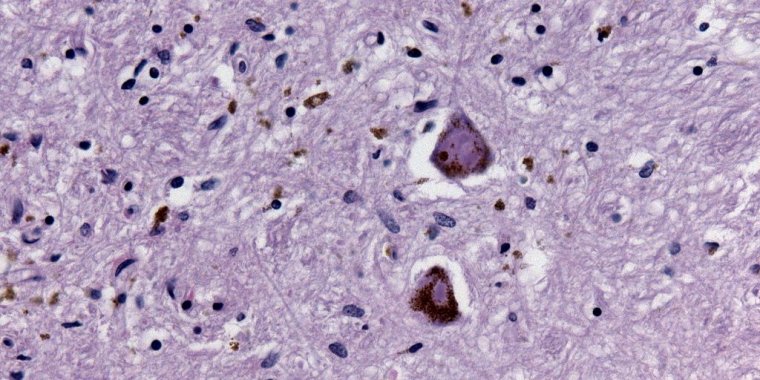| News / Science News |
Scientists find a role for Parkinson’s gene in the brain
For more than 10 years, scientists have known that mutations in the LRRK2 gene can lead to Parkinson’s disease, yet both its role in the disease and its normal function in the brain remain unclear. In a study in mice, researchers have now found that LRRK is necessary for the survival of dopamine - containing neurons in the brain, the cells most affected by Parkinson’s. Importantly, this finding could alter the design of treatments against the disease.

Eosinophilic inclusions parkinson. ![]()
To better understand the roles of these related proteins in brain function using animal models, Shen and her colleagues created mice lacking both LRRK1 and LRRK2. They observed a loss of dopamine-containing neurons in areas of the brain consistent with PD beginning around 15 months of age.
When the researchers looked at the affected brain cells more closely, they saw the buildup of a protein called α-synuclein, a hallmark of Parkinson’s, and defects in pathways that clear cellular “garbage.” At the same time, more dopamine-containing neurons also began to show signs of apoptosis, the cells’ “self-destruct” mechanism.
While the deletion of both LRRK1 and LRRK2 did not affect overall brain size or cells in such areas of the brain as the cerebral cortex and cerebellum, the mice showed other significant effects such as a decrease in body weight and a lifespan of only 15 to 16 months.
Thus, the scientists were unable to study other Parkinson’s-related effects such as changes in behavior and movement nor were they able to conduct a long-term analysis of how LRRK’s absence affects the brain.
Interestingly, the most common disease-linked mutation in LRRK2 is thought to make the protein more active. As a result, most efforts to develop a treatment against that mutation have focused on inhibiting LRRK2 activity.
The fact that the absence of LRRK leads to the death of dopamine-containing neurons suggests that the use of inhibitory drugs as a treatment for Parkinson’s disease might not be the best approach.
YOU MAY ALSO LIKE



